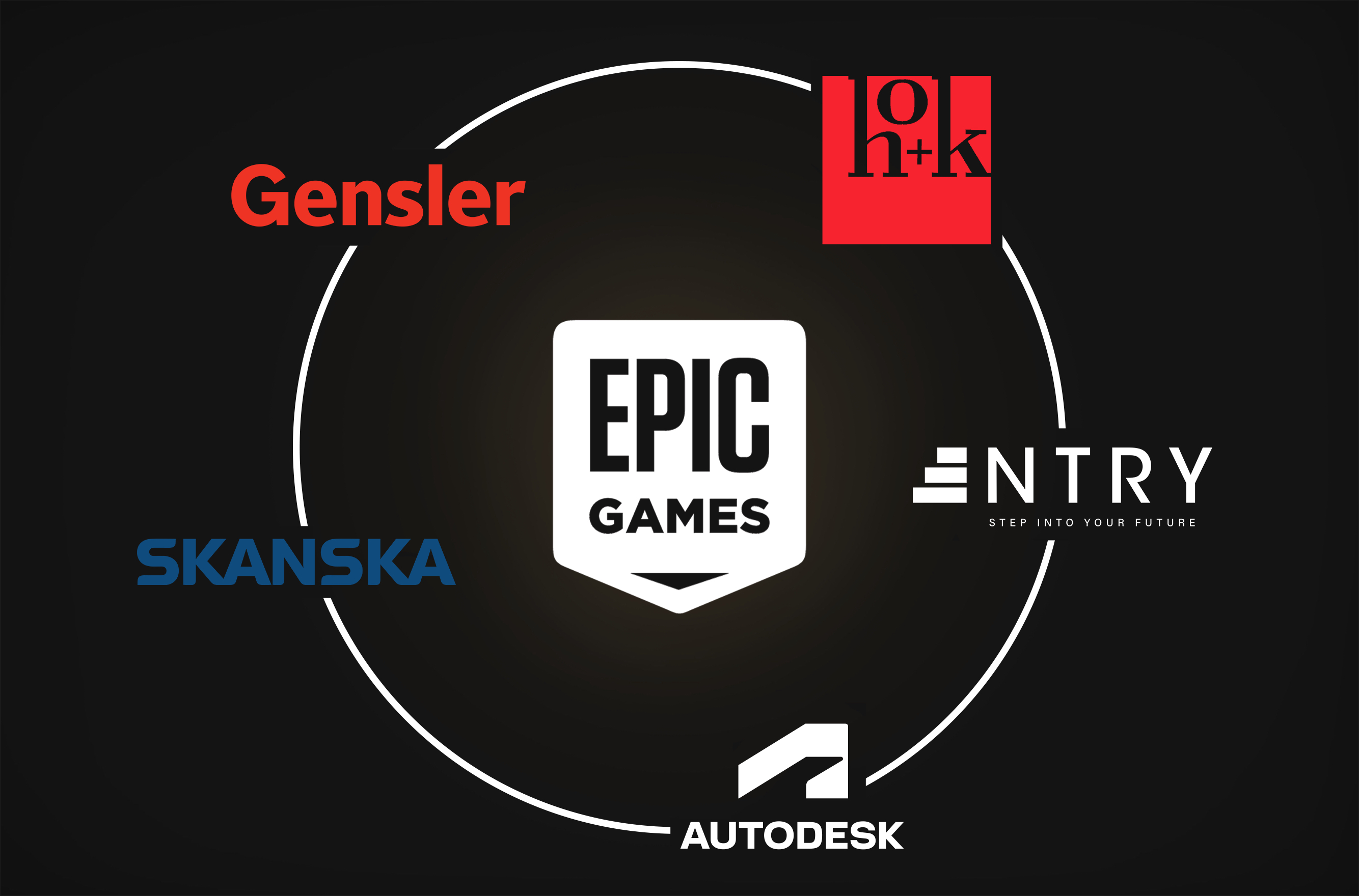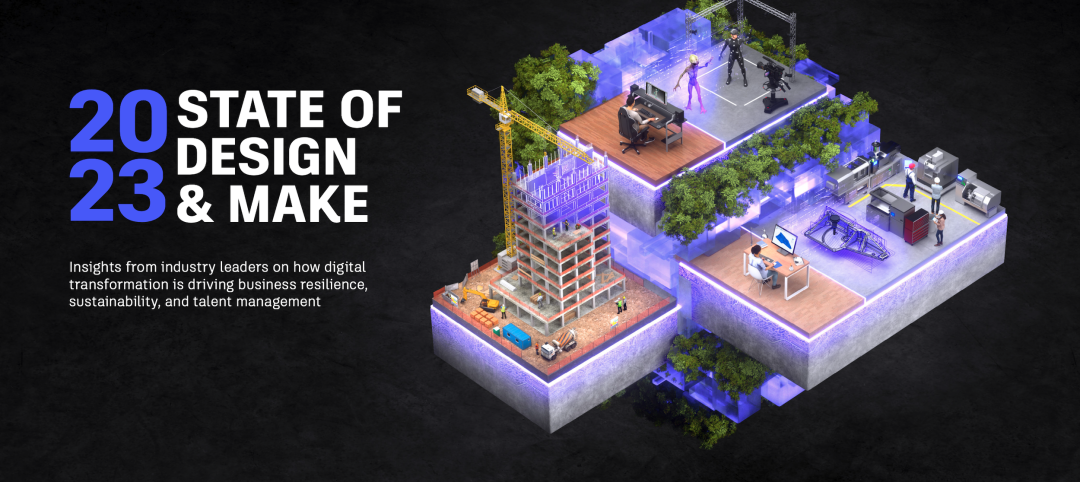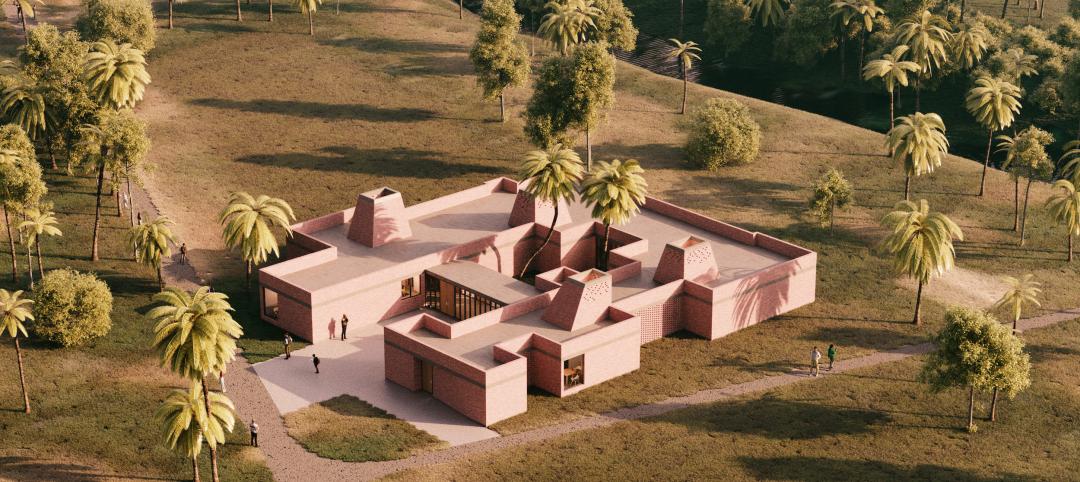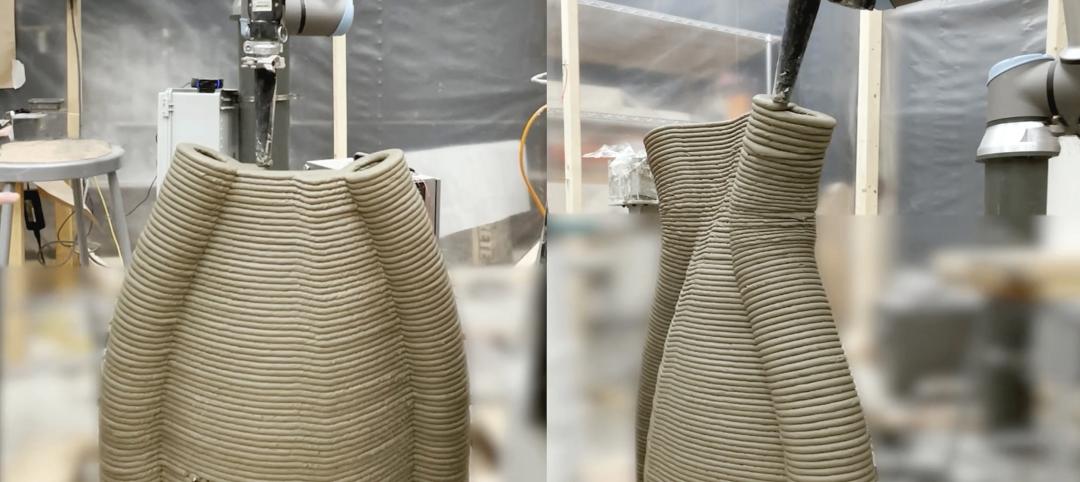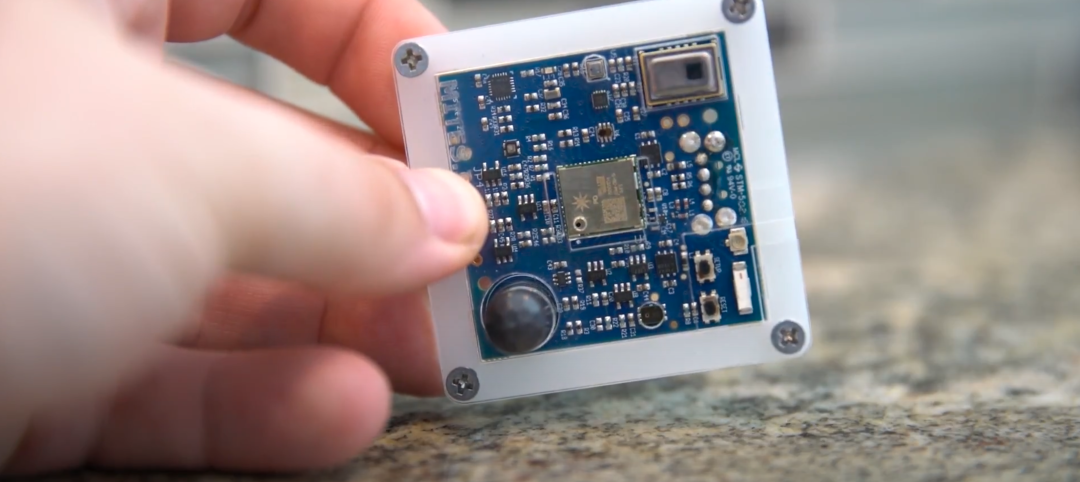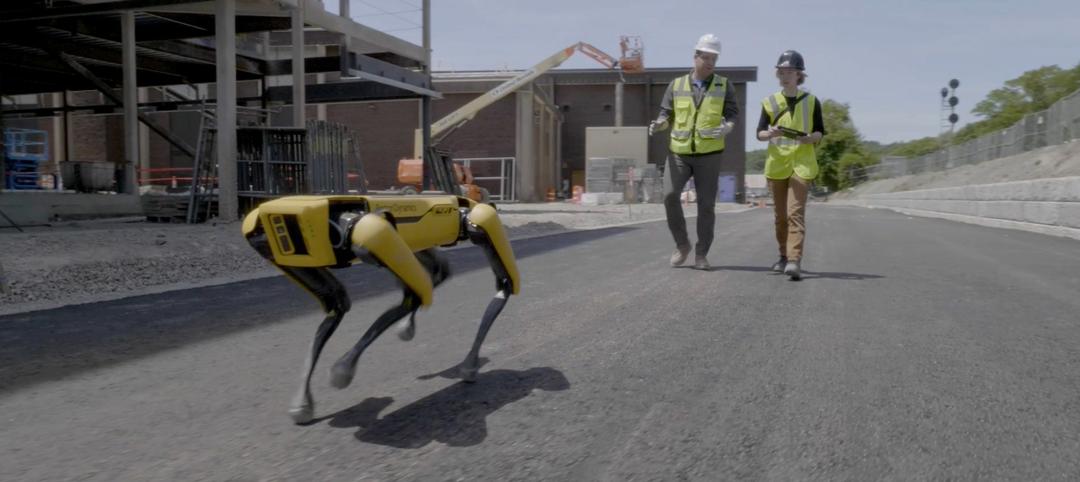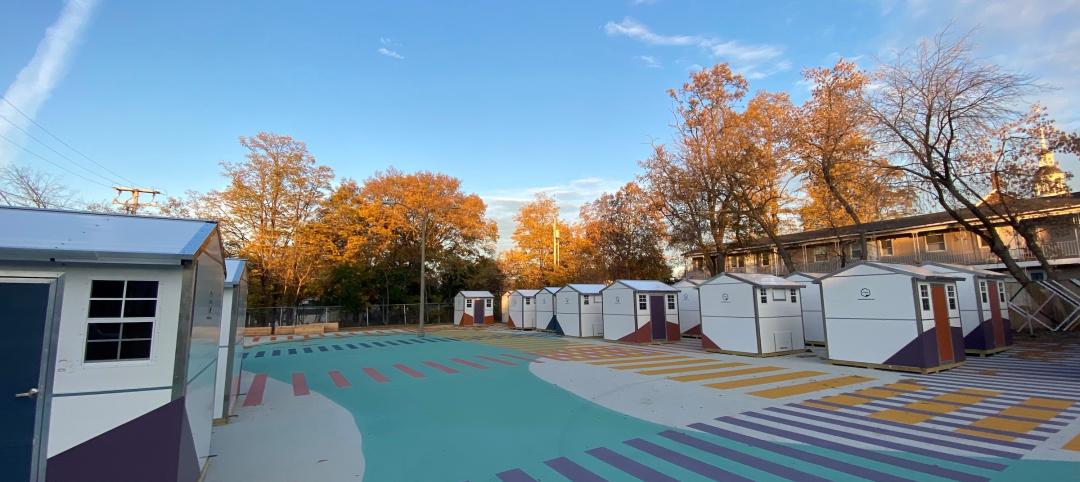Autodesk has announced its collaboration with Epic Games (yes, the people behind Fortnite) to accelerate immersive virtual modeling in the Architecture, Engineering, and Construction (AEC) industry.
What does designing and building homes have to do with video games? Well, Epic Games develops one of the most powerful real-time 3D design tools out there today: Unreal Engine. The latest iteration of the free tool, Unreal Engine 5, utilizes technical achievements to simulate hyper-realistic environments in real-time.
Unreal has already been used across many other industries: film and television, architecture, and even the automotive industry. It seems, though, that more and more AEC firms are beginning to dip their toes into the world of Unreal Engine’s computer-aided design.
AEC INDUSTRY FIRMS USING UNREAL ENGINE
HOK
Architecture firm, HOK, is one company utilizing Epic Games’ technology. Through the power of Unreal Engine alongside Epic Games’ other design tool, Twinmotion (more on that later), HOK is creating virtual reality (VR) walkthroughs to aid in a Canadian architectural renovation project.
These “brick-to-beam” interactive walkthroughs are meant to serve as a preview of what Canada’s iconic Centre Block will look like for years to come. HOK finds that using computer-aided design for this project is beneficial, as clients can clearly see what they like and don’t like about the model—all before spending billions of dollars on the project.
Skanska
Skanska Sweden used Unreal Engine with 3ds Max during the development of a 700,000 square-foot research facility in 2019. The firm leveraged the 3D modeling tools to create VR renderings of the project, as well as high-quality visualizations with realistic lighting scenarios.
“Using 3D tracking with a drone enabled us to visualize the 3D-modeled designs in actual surroundings, many years prior to completion,” says Ronald Cruz, BIM coordinator, Sweco Architects. “Rendered contents from 3ds Max proved beneficial regarding the communications between design, contractors, stakeholders, and the board of directors.”
VIRTUAL REAL ESTATE WITH UNREAL ENGINE 5
NTRY
NTRY, a Canadian cloud-based real estate company, has developed a digital tool for buyers to tour properties in the real estate market. Touting itself as the first real estate metaverse, NTRY utilizes the power of 3D CityScapes—powered by Unreal Engine—which specializes in creating digital interactive environments.
NTRY’s web-based tool—aimed mostly at brokers, agents, developers, and buyers—grants users the ability to access online virtual showings from anywhere in the world. Realtors are able to show clients multiple on-the-market homes from the comfort of their office.
This allows prospective buyers to “experience the heights of a downtown condo, the quietude of the suburbs, or walk through the bustling city streets,” according to NTRY. The tool includes the ability to change finishes and design choices in real-time, like swapping out a marble countertop for granite, for example.
V2i Realtime
Another beneficial use of Unreal Engine is being able to properly showcase the size and scale of projects. V2i Realtime is another company doing such things, consolidating all of a project’s data into a single 3D environment.
What this means, then, is that stakeholders and clients are able to explore the digital space from any device with a web browser. This is done through Pixel Streaming, in which visual “noise” (that can lead to misinterpretation, errors, and confusion) is reduced.
“Unreal Engine eliminates so much wasted time, energy, and dollars that we often see as a result of the need for third-party interpretation of traditional, and often technical, 2D data and reports,” says Luke Brannelly, founder, managing director, and creative director at V2i Realtime.
EPIC GAMES’ TWINMOTION TOOL
Autodesk
Epic Games has more tools than Unreal, too. In its recent partnership with Autodesk, Epic Games is giving those with Revit subscriptions the ability to access Epic’s other tool, Twinmotion, for free.
The two companies believe this integration between Autodesk Revit and Twinmotion will allow users to spend more time bringing their design ideas to life, and “less time handling complex data and technical workflows,” according to Marc Petit, vice president, Unreal Engine Ecosystem at Epic Games.
But what makes Twinmotion different from Unreal Engine?
Twinmotion
While Unreal marries real-time design with user interactivity, Twinmotion largely focuses on creating visualizations to be exported as images or 360 degree video. Though Twinmotion is powered by Unreal Engine, it’s built to be used more frequently by architects, urban planners, landscaping professionals, and even consumer product designers.
Epic Games touts Twinmotion’s “one-click sync” capability—being able to easily import designs from Revit, SketchUp Pro, Archicad, BricsCAD, Rhino, Vectorworks, and more.
With the new Autodesk partnership, Revit subscribers can now launch Twinmotion directly from the Revit ribbon.
WHAT IS THE BENEFIT OF COMPUTER-AIDED DESIGN?
There are dozens of other AEC and real estate firms not listed here that utilize Epic Games’ technology for their businesses. From Gensler to Foster+Partners, it seems more and more companies are adding tools like Unreal Engine to their design arsenal.
However, there’s a reason not every company is quickly jumping into the world of Unreal. Though Epic’s tools are designed to be intuitive, it still takes time and practice to transition workflows from software to software. Most firms may not have the financial resources to train people on Twinmotion/Unreal Engine. Plus, real-time high-quality virtualization doesn’t come cheap, as a decently high-powered computer needs to be used to get the full benefits of the software.
But when it is used, computer-aided design can prove to be a powerful visualization tool that aids in communication, clarity, and productivity.
Related Stories
Sustainability | May 1, 2023
Increased focus on sustainability is good for business and attracting employees
A recent study, 2023 State of Design & Make by software developer Autodesk, contains some interesting takeaways for the design and construction industry. Respondents to a survey of industry leaders from the architecture, engineering, construction, product design, manufacturing, and entertainment spheres strongly support the idea that improving their organization’s sustainability practices is good for business.
AEC Tech | May 1, 2023
Utilizing computer vision, AI technology for visual jobsite tasks
Burns & McDonnell breaks down three ways computer vision can effectively assist workers on the job site, from project progress to safety measures.
AEC Tech Innovation | Apr 27, 2023
Does your firm use ChatGPT?
Is your firm having success utilizing ChatGPT (or other AI chat tools) on your building projects or as part of your business operations? If so, we want to hear from you.
Design Innovation Report | Apr 19, 2023
HDR uses artificial intelligence tools to help design a vital health clinic in India
Architects from HDR worked pro bono with iKure, a technology-centric healthcare provider, to build a healthcare clinic in rural India.
Resiliency | Apr 18, 2023
AI-simulated hurricanes could aid in designing more resilient buildings
Researchers at the National Institute of Standards and Technology (NIST) have devised a new method of digitally simulating hurricanes in an effort to create more resilient buildings. A recent study asserts that the simulations can accurately represent the trajectory and wind speeds of a collection of actual storms.
3D Printing | Apr 11, 2023
University of Michigan’s DART Laboratory unveils Shell Wall—a concrete wall that’s lightweight and freeform 3D printed
The University of Michigan’s DART Laboratory has unveiled a new product called Shell Wall—which the organization describes as the first lightweight, freeform 3D printed and structurally reinforced concrete wall. The innovative product leverages DART Laboratory’s research and development on the use of 3D-printing technology to build structures that require less concrete.
Smart Buildings | Apr 7, 2023
Carnegie Mellon University's research on advanced building sensors provokes heated controversy
A research project to test next-generation building sensors at Carnegie Mellon University provoked intense debate over the privacy implications of widespread deployment of the devices in a new 90,000-sf building. The light-switch-size devices, capable of measuring 12 types of data including motion and sound, were mounted in more than 300 locations throughout the building.
Architects | Apr 6, 2023
New tool from Perkins&Will will make public health data more accessible to designers and architects
Called PRECEDE, the dashboard is an open-source tool developed by Perkins&Will that draws on federal data to identify and assess community health priorities within the U.S. by location. The firm was recently awarded a $30,000 ASID Foundation Grant to enhance the tool.
AEC Tech | Mar 14, 2023
Skanska tests robots to keep construction sites clean
What if we could increase consistency and efficiency with housekeeping by automating this process with a robot? Introducing: Spot.
Modular Building | Mar 3, 2023
Pallet Shelter is fighting homelessness, one person and modular pod at a time
Everett, Wash.-based Pallet Inc. helped the City of Burlington, Vt., turn a municipal parking lot into an emergency shelter community, complete with 30 modular “sleeping cabins” for the homeless.


